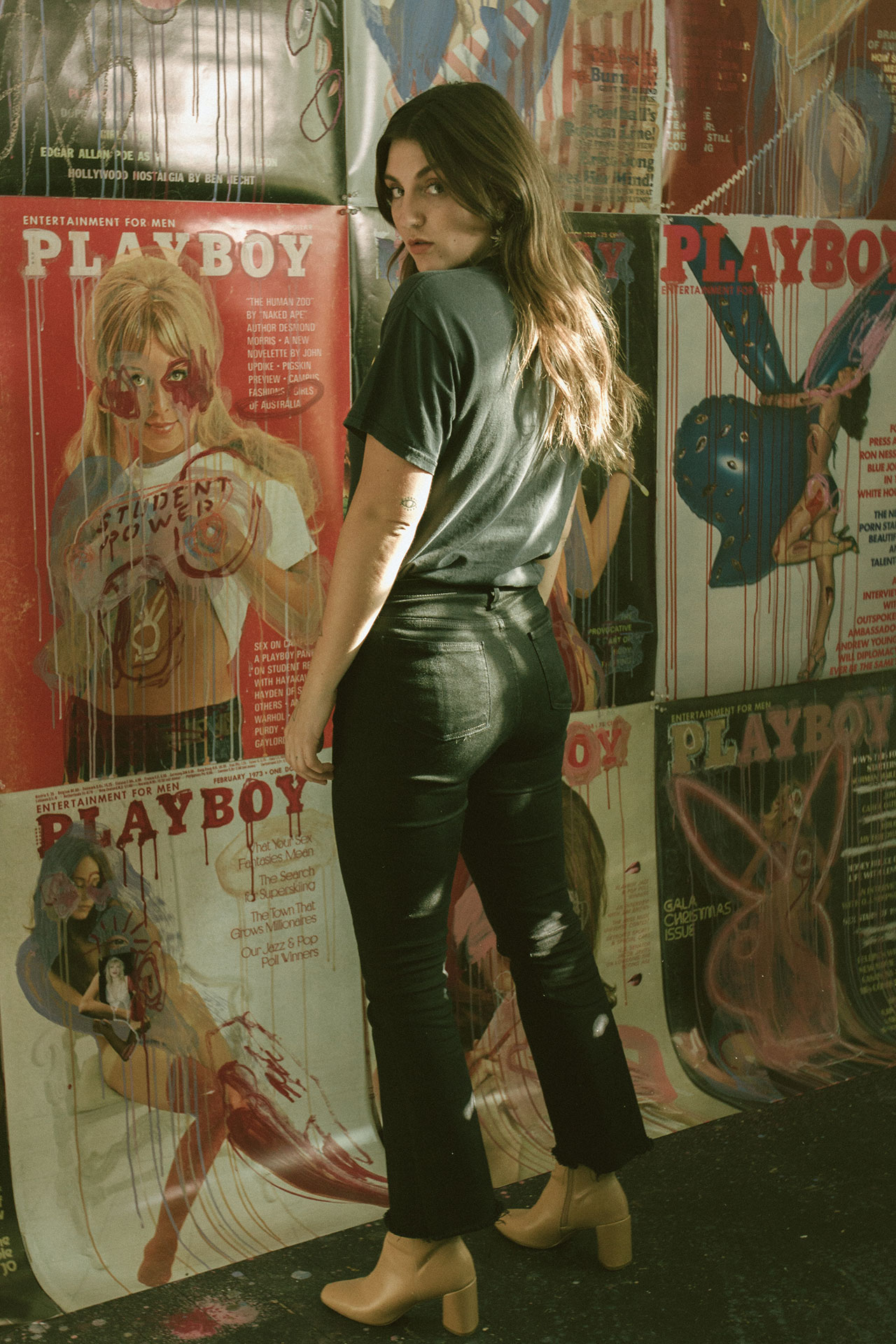News feed

The artist Jessica Cochrane
Credit: Alexander Tull
Much like its namesake before it, the ‘Pisstine Chapel’ was commissioned over text message between an artist and patron.
“I messaged Jake and said something like ‘Oi Jake! What if we collage the ceilings instead of the doors and then it’s like Michael Angelo’s Sistine Chapel but instead we could call it the Pisstine Chapel and we can make heaps of shitty puns out of it’,” the Sydney-based artist Jessica Cochrane told GRAZIA. “And he replied, ‘OH FUCK YES!’ and so we did it.”
Jake, of course, refers to Jake Smyth, co-owner alongside Kenny Graham of the soon-to-be-reopened Lansdowne Hotel (as well as Mary’s and The Unicorn), that once-moribund bastion of Sydney nightlife culture that for decades has overlooked a juncture between excellent and poor decisions made at the intersection of three notoriously congested thoroughfares – the kind that would drive anyone to drink. Though she says she has long admired the structure from afar, Cochrane herself never lived in Sydney during the Lansdowne’s halcyon days, and so it seems somewhat fitting then that she has played an instrumental role in its resurrection for a new generation of publicans adamant that the venue support a local culture of live music, as well as a more considered version of the classic pub offering where food and drink are concerned. Smyth and Graham charged Cochrane with overseeing the artistic direction of the back courtyard, the bathrooms (said ‘Pisstine Chapel’), all the menu designs, the staff t-shirts and a large feature wall in the upstairs area – a pastiche of repurposed vintage Playboy covers, all of which have been the recipient of Cochrane’s signature painterly treatment, as well as some highly considered collage work.
“The basis of my practice is creating work that interrogates notions of beauty and the grotesque and how those tie in to popular culture and our everyday,” says Cochrane. “The works break down and break through these standards of feminine beauty. Rather than being focused on one particular kind of beauty or one particular kind of feminine or any kind of perfectionism. It is all inclusive.”

At left, one of Jessica Cochrane’s reinterpreted Playboy covers as it appears at The Lansdowne; at right, the artist pictured installing one of her works, dubbed The Pisstine Chapel
Credit: Courtesy of the artist/Alexander Tull
“By painting expressively over a perfectly composed image,” Cochrane continues, “I can create a space in which are able discuss how these standards affect us and how we can move the notion of ‘femininity’ and ‘feminist’ into the future. In the case of using something as iconic as Playboy, the intention is to look at how much shift and change we’ve had in the last few decades and how much further we have to go. I find great fascination in how we respond to visual imagery day-to-day that is designed for our consumption. So taking that imagery and turning it into something that is disruptive and thought provoking rather than simply perfect is its subversion.”
Prior to executing her vision for the newly-exhumed Lansdowne, Cochrane, who says a practice of self-acceptance and self-love is integral to her work, spent weeks cutting up “a whole lot of porn, something like 18 magazines” with the assistance of her two “legendary interns, Sophie and Ela”. The excised appliqués were then applied to the ceiling using wallpaper paste, before a top layer of pastel was added to create the finished product. Cochrane says the work itself was quite physically taxing, given the nature of her canvas, and that some of that underlying self-love had to be returned in kind to its creator. “I found that I had to be really patient with my body,” she says, “and do one day on this element of the project and one day on another element in order to complete it.”
There is, of course, something to be said of the style of imagery Cochrane has chosen to place in an environment – an Australian pub – with all the underlying associations that one has. But rather than see the work she has created as being oppositional to that context, Cochrane explains that it’s entirely in keeping with the Lansdowne’s resurrection. “It’s not about opposing and it’s not about having an answer. It’s all about raising questions and being more aware of intersectionality. By contextualising this work in a venue that could be considered a commonly male dominant space or a space where art thinking isn’t commonplace, we get to provoke new ideas and conversation with a new audience.”
And what does Cochrane hope viewers of her work will take away from the part it’s playing in helping to breathe new life into an institution whose best days are still to come? “I just hope everyone has a fun experience and that the venue can bring a smile to their face.”
The Lansdowne reopens tomorrow June 15 with a four day celebration of live music from some pretty incredible acts to be announced each night. You can find out more information here.
Tile and cover image: Alexander Tull










